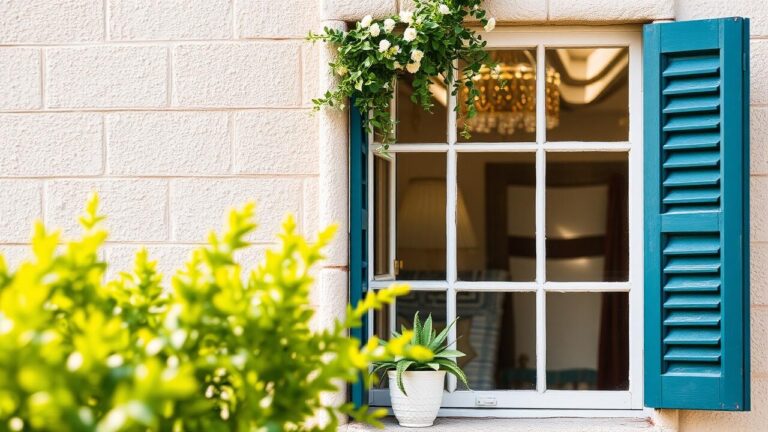When planning to remodel your basement or add a bedroom, understanding the egress window requirements is crucial. Not only do these windows provide natural light and ventilation, but they are also essential for safety, providing an emergency exit in case of a fire. In this article, we’ll delve into the specifics of egress window requirements, helping you ensure your home is up to code and safe for all occupants.
What Are Egress Windows?
Egress windows are large enough to serve as an exit during an emergency. The International Residential Code (IRC) sets forth specific dimensions and installation guidelines to ensure that these windows are accessible and functional. Whether you’re adding a new window or upgrading an existing one, meeting these requirements is not just about compliance—it’s about safety.
Why Are Egress Windows Important?
Egress windows are a critical component of any residential building. They provide:
- Emergency Escape: In the event of a fire or other emergencies, they offer a way out.
- Rescue Access: For firefighters and rescue teams, these windows allow easy access to the building.
- Natural Light: They help brighten up your basement or any other space.
- Ventilation: Proper ventilation through these windows can improve air quality.
Meeting the egress window requirements ensures that your home is not only legally compliant but also safe and habitable.
Key Egress Window Requirements
Understanding and meeting egress window requirements involves knowing specific dimensions, placement, and operational standards. Let’s break down the essentials:
Size and Dimensions
Egress windows must meet minimum size requirements to ensure they are large enough for occupants to escape through and for emergency responders to enter. The IRC stipulates:
- Minimum Opening Width: 20 inches
- Minimum Opening Height: 24 inches
- Minimum Net Clear Opening: 5.7 square feet (5 square feet if located at ground level)
- Maximum Sill Height: 44 inches from the floor
These measurements ensure that even in a panic situation, the window is easily navigable.
Placement and Accessibility
The placement of your egress window is just as important as its size. They should be:
- Easily Accessible: There should be no obstructions, such as bars or grilles, that cannot be removed without tools.
- Within Reach: Positioned where occupants, including children and elderly, can reach them without difficulty.
- Properly Positioned: For basements, windows should open directly into a public way or a yard accessible to a public way.
Operational Standards
Egress windows must be operational from the inside without the need for keys, tools, or special knowledge. They should be easy to open to ensure quick and unimpeded escape.
Window Wells
Window wells are required for windows below ground level. They should provide at least 9 square feet of space and extend 36 inches out from the window. If the well is deeper than 44 inches, a permanent ladder or steps are required to facilitate a safe exit.
Egress Window Types
Choosing the right type of window for your egress requirements is essential. Here are some common types:
- Casement Windows: These are hinged at the side and open outward, often providing the largest clear opening.
- Double-Hung Windows: Both sashes slide vertically, but only the bottom sash can be used as an egress opening.
- Sliding Windows: These windows slide horizontally, but you must ensure the opening meets the minimum size requirements.
Each type has its pros and cons, so consider your space and the specific egress window requirements when choosing.
Installation Considerations
When installing egress windows, it’s vital to ensure that they are properly integrated into the building’s structure. Here are some tips:
- Hire a Professional: While DIY installation might be tempting, professional installation ensures compliance with building codes and proper sealing and insulation.
- Check Local Codes: Local building codes can have additional requirements beyond the IRC, so it’s essential to consult with local authorities.
- Weatherproofing: Proper sealing and weatherproofing are crucial to prevent leaks and drafts.
Maintenance and Safety Tips
Regular maintenance is key to keeping your egress windows functional and safe. Here’s what you should do:
- Test Regularly: Open and close your egress windows periodically to ensure they are not stuck or difficult to operate.
- Inspect for Damage: Look for any signs of wear, such as rust on hardware or cracks in the frame.
- Clean Window Wells: Keep the wells free of debris, snow, or ice to maintain clear access.
Common Challenges and Solutions
Understanding egress window requirements is one thing, but implementing them can come with challenges. Here are some common issues and how to address them:
Space Limitations
If you’re working with a small space, casement windows are often the best choice due to their wide opening. Alternatively, you might need to consider structural changes to enlarge the window opening.
Water Infiltration
Waterproofing is critical, especially for basement egress windows. Installing proper drainage systems and ensuring the window well is sealed can prevent water from entering your basement.
Security Concerns
Egress windows can be a potential entry point for intruders. Consider adding security measures such as window alarms or locks that comply with egress requirements.
Cost Considerations
Egress windows and their installation can be costly. However, the investment pays off in terms of safety, compliance, and increased home value. Budget for professional installation to avoid costly mistakes.
Ensuring Compliance with Egress Window Requirements
Meeting egress window requirements is not just about ticking a box—it’s about creating a safe living environment. Here’s how to ensure you’re compliant:
- Consult Experts: Work with architects, builders, and inspectors who are familiar with local and international building codes.
- Stay Updated: Building codes can change, so keep informed about the latest requirements.
- Plan Ahead: Consider egress windows early in your renovation or building project to avoid costly changes later.
Conclusion
Egress windows are a vital safety feature in any home, especially for basements and bedrooms. By understanding and adhering to the egress window requirements, you not only comply with building codes but also enhance the safety and comfort of your home. Whether you’re installing new windows or upgrading existing ones, ensure they meet all necessary standards for size, placement, and operation. Remember, a well-installed egress window can save lives.


